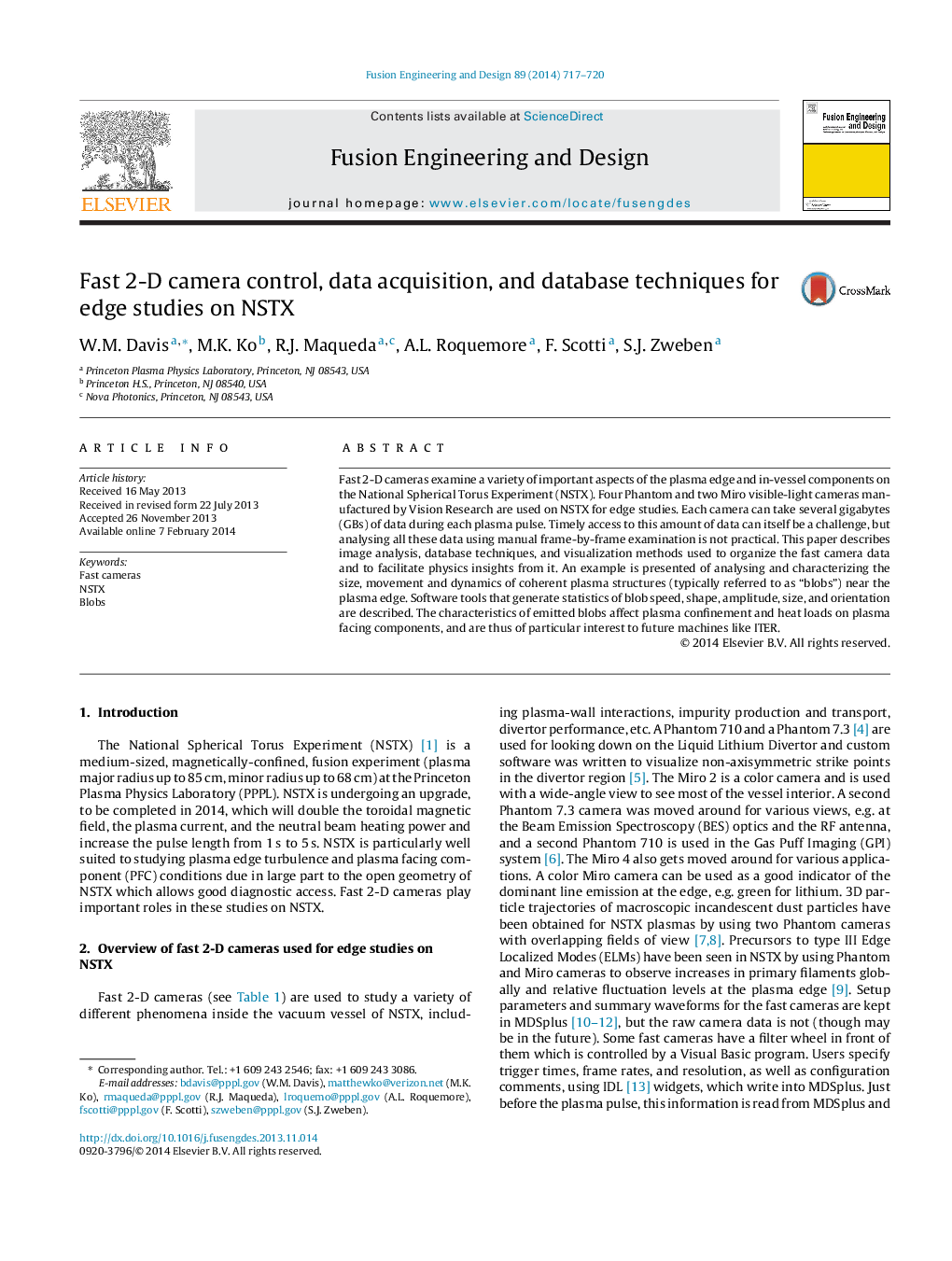| Article ID | Journal | Published Year | Pages | File Type |
|---|---|---|---|---|
| 271455 | Fusion Engineering and Design | 2014 | 4 Pages |
Fast 2-D cameras examine a variety of important aspects of the plasma edge and in-vessel components on the National Spherical Torus Experiment (NSTX). Four Phantom and two Miro visible-light cameras manufactured by Vision Research are used on NSTX for edge studies. Each camera can take several gigabytes (GBs) of data during each plasma pulse. Timely access to this amount of data can itself be a challenge, but analysing all these data using manual frame-by-frame examination is not practical. This paper describes image analysis, database techniques, and visualization methods used to organize the fast camera data and to facilitate physics insights from it. An example is presented of analysing and characterizing the size, movement and dynamics of coherent plasma structures (typically referred to as “blobs”) near the plasma edge. Software tools that generate statistics of blob speed, shape, amplitude, size, and orientation are described. The characteristics of emitted blobs affect plasma confinement and heat loads on plasma facing components, and are thus of particular interest to future machines like ITER.
